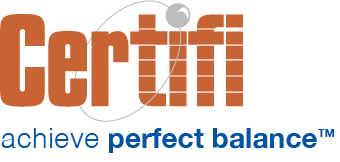For many employers, the process of reconciling benefits billing with multiple health and voluntary insurance carriers can be time-consuming. As a result, many employers ask their benefits administrators about their consolidated benefits billing capabilities. Unfortunately, many benefits administrators lack consolidated benefits billing capabilities, putting them at a distinct competitive disadvantage.
Read on to learn more about consolidated benefits billing, whether benefits administrators should build or buy a solution, and more.
What is consolidated benefits billing?
As the name implies, consolidated benefits billing combines all of an employer’s benefits bills into one payment. So instead of receiving multiple bills from multiple carriers, vendors leverage configurable software to consolidate those bills. When the payment is made, the software calculates distributions to carriers and brokers.
Many consolidated billing solutions also include a payment portal that simplifies the employer’s payment process. Other common features include:
- The ability to manage individual billing and payment processing. For example, COBRA or leave of absence billing.
- Integrating and supporting complex rate structures.
- The ability to download billing statements and reports.
- Configurability that enables white labeling a solution for customers.
- Delinquency management functions.
Why do employers value consolidated benefits billing?
Simply put, consolidated billing streamlines their process, saving time and likely improving the accuracy of their benefits payments in the process. Large employers with multiple locations and insurance products can experience a significant return on investment by consolidating their benefits bills.
Should benefits administrators build or buy consolidated billing solutions?
Most benefits administrators struggle with the build vs. buy decision. On one hand, they want everything in-house. On the other hand, most benefits administrators lack the staff to build consolidated billing software. Building an enrollment solution differs significantly from billing solutions. That means building may require significant staff investments. Instead, benefits administrators can purchase configurable, white-labeled cloud solutions like Certifi’s William billing and payments platform. Unlike building a solution — which can take years and cost a significant amount of money to stand up — purchasing and implementing a white-labeled consolidated billing solution can be completed in as little as 90 to 120 days.
What should administrators look for when buying a solution?
If you decide to buy a consolidated benefits billing solution, there are several ways to judge the efficacy of the solution:
Reputation
You want a solution provider with a reputation for delivering a high ROI solution. There are several ways to judge a consolidated billing solution’s reputation, including:
- Ask how many transactions they process within a given period (year, month, etc.)
- Ask about similar customer experiences and see if they’ll provide references.
- Look online to see if any reviews exist and what they say
- Look to analysts like Gartner to see if they’ve provided any coverage
Doing due diligence upfront can help ensure you’re partnering with a solution provider that can meet your needs.
Past Experience
You want a partner that has experience similar to your requirements. You may find venture-backed solutions built by technology experts that lack the expertise necessary for benefits billing. Or solutions aimed at another billing need that can’t manage the complexities of benefits billing.
Mature Technology
The technology stack the potential solution uses can help you determine how future-proof it is. For example, solutions built in the cloud leveraging Amazon Web Services (AWS) can benefit from Amazon’s significant experience building scalable, redundant technology solutions. As a result, solutions built on AWS infrastructure will likely be able to scale to meet your future needs while also minimizing disruptions. So ask about the underlying technology stack to better understand how the solution will continue to support your needs in the future.
Also, see if the solution uses emerging technology to streamline processes and limit manual work. For example, we’ve implemented machine learning technology to streamline the application of individual payments that lack identifying information. Understand how the solution leverages technology to simplify and automate common tasks.
System Design
Finally, consider system design. Many vendors repurpose snapshot or COBRA billing solutions. That can be problematic when creating consolidated bills. At Certifi, we use a unique Perfect Balance design to couple debits and credits at the individual level. Why does that matter? It means any retroactivity and other changes can be automated, limiting manual work while improving the accuracy of every payment.
Certifi’s William is automated premium billing and payment software that streamlines benefits billing and payment solutions for employers and benefits administrators.



